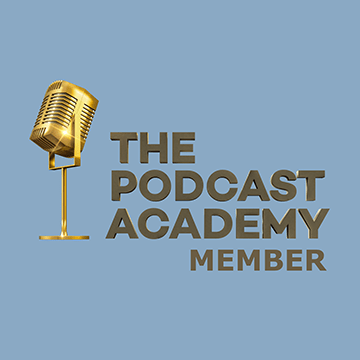Transcript
Imagine you’ve got an idea to not just grow but scale your business. You’re excited. You’re ready to get to work and make that idea a reality. But how will you implement it? What resources do you need? How much will it cost? How long will it take? Having a validated idea that solves a real problem for a sizeable market is one thing, but implementing it is another. It requires thought. It requires ingenuity. It requires…a strategy.
This is the Business Infrastructure Podcast – the show where we share operational tips, tactics, and strategies to help you cure any back-office blues you might be experiencing. In the last two episodes you learned about the Lean Canvas, a tool for vetting and validating your business growth ideas. Now it’s time to develop a strategy around that idea. One that will give your team the direction needed to implement your idea. And we have just the person to help facilitate that. This subject matter expert is no stranger to strategic planning. He’s taught Lean Six Sigma and project management to over 3,000 people and has led strategic planning and process improvement initiatives in dozens of industries including aerospace, healthcare, military, and even music!
As a U.S. Navy veteran, he’s not only participated in military strategy but was also an active participant in its deployment. Suffice it to say, he knows what strategy and operational excellence is all about. He’s also a Lean Six Sigma Master Black Belt and certified Project Management Professional. His breadth and depth of knowledge makes him an excellent instructor and mentor. You present a certain problem or scenario to him, he’s probably seen it or experienced it in some way. So, get ready!
This is Ep. 288: John Kamp Explains How to Create a Strategic Plan Using the XMatrix
Before we get started, I must say John it’s an honor to have you come back onto the show. As I prepared for this interview, I realized you were part of the first season back in 2018. And so much has happened since then, but one thing that has been
consistent is your support. So I just want to formally acknowledge you and thank you for that because you took a chance on me by being a guest on the show in its infancy, not sure what it would become or if it would even survive after that first season.
Well, first and foremost, thank you so much for having me back. I really appreciate it, and I look forward to doing everything I can to assist your endeavor here to enlighten people on how to utilize the X-Matrix, as well as to take a look at diving in deeper to Hoshin Kanri.
Well, let’s get right to it. John, being that you’re a Lean Six Sigma Master Black Belt, you’ve used the X-matrix tool extensively in your career. But before we get into that specific tool, there’s something that the X-Matrix is a part of and that’s Hoshin Kanri. Can you first explain what Hoshin Kanri is? 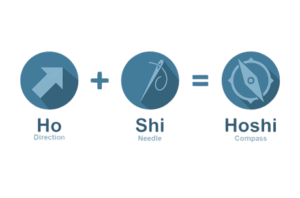 Hoshin Kanri is a strategic tool, it’s a visual tool. It helps us in strategic planning we take a look at various things that we want to plan for in the long term and then we go ahead and break that down into short term goals and then we take a look at how to prioritize those goals and then what we do to target improvement. We make sure that we want to improve whatever we see in our strategic goals, why we’re making our strategic goals. And then what we want to do is make sure that we have accountability to those goals by utilizing our resources.
Hoshin Kanri is a strategic tool, it’s a visual tool. It helps us in strategic planning we take a look at various things that we want to plan for in the long term and then we go ahead and break that down into short term goals and then we take a look at how to prioritize those goals and then what we do to target improvement. We make sure that we want to improve whatever we see in our strategic goals, why we’re making our strategic goals. And then what we want to do is make sure that we have accountability to those goals by utilizing our resources.
John, is it safe to say that Hoshin Kanri is the actual strategic planning framework or process that you just described and that the X-Matrix is the actual tool used within that framework or process?
Yes, it’s a tool that’s used within Hoshin Kanri. it’s a one-page visual, dynamic tool that really helps everybody get on the same page understanding what the strategic objectives are, key initiatives, metrics. But it also holds people accountable. Say you’re doing a three- or five-year strategic planning, in Hoshin Kanri it could look really different depending on the size of company you have. You can have a small company and still use Hoshin Kanri, which really is the term that’s used for policy deployment. Hoshin is where your direction is going and Kanri would be the policies in which you will go ahead and present to your team clarity and make sure that you have consistency and really everybody is on the same page and understands exactly what we’re going to be doing.
In his book, “The E-Myth,” author Michael Gerber talks about the importance of business owners moving from technicians to true entrepreneurs. That means focusing on the bigger picture. The strategy. John, how does the Hoshin Kanri process for strategic planning begin?
The X-Matrix is a tool, but understanding Hoshin Kanri is really important. In Hoshin Kanri, when I go into a a consulting engagement, I’ll sit down with primarily the executive team, depending on the size of the business, of course. And I start off very simple and I just say to the team, “If you all would take out a piece of paper and just write down three items that that you feel are the most important strategic objectives that would improve the company, obviously improve morale, and ensure that you have a way of monitoring and managing it.”
When you sit down with the people, you’ll find that not everybody believes that the priorities are the same. So when I received the pages back from the various executives and say, I have four people there, you’ll find that they have sometimes completely different initiatives that they think are important. And when you look at the initiatives that they think important, we do what we call “catch ball.” We kind of throw ideas back and forth. We want to come to a consensus to where everybody agrees that, okay, these are our three, four, five objectives that we really want to hit within the next, say, three year to five year time frame.
So what you’re doing in a Hoshin session is you’re really kind of gleaning from your executive team and you can even use it to supervisory level, your team leader, you’re trying to take a look at what is it that we really want to do? How are we going to go ahead and break this down and how are we going to go ahead and prioritize the different information that we want to convey to our whole group in one page and then go ahead and put down the targets to improve and then also assign those that will be accountable to ensure that that happens? So Hoshin Kanri itself is a session that you would do and then from that you would utilize the X-Matrix.
Got it! John, you mentioned something that I’m wondering if you can talk more about it, and that is – handling conflicting priorities. People can be very passionate about what they think are the top priorities or objectives for an organization’s growth. How do you handle that? Can you give an example?
I do it by trying to reach consensus and I’ll just give you an example. Say I have six people in a room and I have them write down what they believe their strategic objective should be for the next say three years. And they’ll just write that down. That’s all I want to know at the beginning. And then once they put that down, I’ll go ahead and team up these six people like twos and they will go ahead and bounce off each other.
And then when we come to the table with those three groups of two. We’ll start what we call, I guess our “intense fellowship” in trying to figure out what will be our ultimate strategic goals for the next three to five years. And yes, everyone has their own little pet project. Everyone has what they feel is the most important and that would be the most advantageous to the company and seeing growth and obviously making sure that they understand completely throughout the executive team exactly what is going to happen. To introduce these strategic goals to the team utilizing a one page sheet of paper that explains all that.That’s where the X matrix comes in.
“Intense fellowship!” Now that’s a new one. I like that! Okay, so far you’ve described an exercise to have leaders convene to discuss and prioritize the top long-term strategic growth goals for an organization. You mentioned this as the starting point of using the X-matrix. Don’t keep us in suspense. What is the X-matrix? What does the one-page tool look like? Can you explain how to use it using that same example of six people?
After I pair them off, I want to bring the groups together to achieve consensus on what the actual objectives will be. And you can have many objectives. You can have three, five, six objectives that you’re going to want to do over the next three and five years. But for purposes of our conversation, let’s take a three-year objectives plan. Get consensus with the team that these are the most important objectives we need.
Once we do that, by utilizing the X-matrix, which I’ll explain what it looks like in just a minute, we want to list down what those three are and what priority they come in. So the top priority has consensus. The secondary and the tertiary would also all have consensus with the group. As far as the X-matrix goes, it’s really simple and I want to simplify this so that if you can understand the simple, you can understand the complex.
If you can imagine a square, just a regular square, and you put an X from corner to corner, which would give you four quadrants. And in those four quadrants you’re going to have a list of those three-year objectives. You’re also going to have how you’re going to break them down. You want to make sure it’s quantitative. You don’t want to put down we’re going to have a lot of growth. You would rather put down we’re going to have 30% growth or things like this.
After you have the annual objectives in alignment with the executive team, you want to make sure that you put down exactly what you’re going to utilize to improve those priorities that you’ve already set and come to consensus on. And then once you put that in an order, that’s what you’re going to work on as far as the various targets of how to improve those. In Hoshin Kanri policy deployment, you want to make sure that your resources are assigned accordingly and are held accountable to that.
Now I do want to say that if you take a look at how I just put that out, as far as in a square and an X, there are going to be various items that will be on the bottom of that X, on both sides and on the top. And that can be in two different ways. I started off with my three year objectives on the bottom and then I’ll put in my annual objectives on the left side of that quadrant and the top quadrant of the X, I would put down my improvement priorities and then on the right side I would put the targets to improve.
And so within that we would sit down in the session, and we would go ahead and say like for instance, I want to reduce my production defects by 30% in a three year time frame. So that would come under your three-year plan of what you’re trying to accomplish your objectives. And then what you want to do is say, okay, how do I do this and to where I can make it realistic, doable, and also make sure that I hit those targets? You don’t want to plan for failure, you want to plan for success.
So the annual objectives you’re breaking that down and making quantitative to say in the first year of the 30% that I’m shooting for, I’m going to go heavy on the first year and I know that just right from the start, I can knock out 15% in the first year. So that the box from the bottom would have that three-year objectives and that annual one that I mentioned on the left side there would be a, if you will, a legend on it that extends from each side of that square that would reflect that annual objective. and from there you would put down the improvement priorities on the top one.
Improvement priorities could be, you want to go ahead and mistake proof some of the things that you have a lot of issues with quality. Quality should be built into your processes instead of just something that you continually check because that wastes time. So you want to go ahead and mistake proof those by using what we call poka-yokes and things that would inhibit the quality to be diminished as it goes through the various process steps. And then when you get to the targets to improve, you may go ahead and put down that you want to do x amount per year on these targets that you’re trying to improve.
So you have this visual that is also dynamic. It’s going to be worked on. It’s not just going to be sitting up there as a visual that everybody will say, “Okay, that’s our annual objectives. And from that we’re going to just leave it there and when we get to the end of the year, boom, we’re going to see if we came very close to what we originally had planned as a dynamic tool.” I recommend you look at it at least quarterly and ensure that you’re on track to hit those annual objectives that you’ve put together based upon your three breakthrough objectives that you’ve all come to consensus on.
In case you had trouble following that, I’ll repeat it because John and I know its challenging describing a visual tool. Okay, here goes.
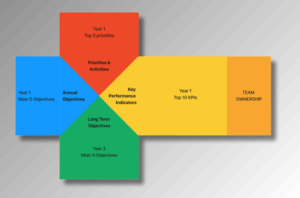
With the X-matrix, as John mentioned, you have a square that you draw a large X inside of. Imagine you do this inside of MS Excel or Google Sheets. There are lines directly underneath, on top of, and on the sides of the X. This is where you type the information John described. Once you and your team agree on the top long-term strategic growth goals or objectives, you enter that information in the 6 o’clock position underneath the X. The closer the objective is to the center of the X, the
higher its priority. In John’s example he mentioned a long-term growth goal of reducing production defects by 30%. You would type that in this area of the matrix
Then, you’ll move in a clockwise direction to the 9 o’clock position of the X-matrix or the left-hand side of the X. This is where you will type in the annual or short-term goals to accomplish and show how it correlates to one of the longer-term goals. John mentioned reducing production defects by 15% as a short-term goal to accomplish, say, in the next 12 months as a step toward ultimately achieving the long-term goal of 30%.
Once that’s done, you’ll continue to move clockwise to the 12 o’clock noon position or above the X. This is where you’ll list specific projects, initiatives, or improvement priorities to implement over the next 12 months to achieve the annual goals. As an example, John mentioned an initiative or project to implement Poka-Yoke in a process which is a Lean Six Sigma term used to describe a product or service design that prevents mistakes. Each initiative listed here must correlate with an annual goal listed.
Next, you’ll move horizontally across the X-matrix to an area where you will assign specific people to the initiatives listed. And finally, you’ll return back to the main X-matrix area to the final position, the 3 o’clock position or the right side of the X. This is where you’ll list specific KPIs or target metrics that will let you know if you’re on track in completing or accomplishing the listed projects and initiatives.
If it sounds tedious, it isn’t. If it sounds like a lot of work, it is! Well, a lot of brainpower is involved and this is why having an outside facilitator is so valuable. John, did I miss anything?
The improvement priorities are set because of the importance obviously. And what you want to do is like for instance in reducing defects. You may use a lot of tools to do that, but what is the primary tool that you would use? The first thing you can do is start taking a look at where are the defects happening? How often are they happening? And what is the implication of that defects happening? There’s an array of issues that can happen obviously with your customer and such.
But as far as your team goes, your team needs to know what it is they’re going to be working on on the first year of those three-year objectives and understand the improvement priorities of how they’re going to do it. And it can be many things. It could be, you know, taking a look at your current state value stream map, finding wastes inside of there and looking at where you can shorten the lead time in that value stream map.
Maybe you want to go ahead and mistake proof those different areas to where you can limit the amount of checks you have to do and actually build the quality in all of your processes as they go through and put out a near perfect product every time for your customer.
If you can imagine the four different quadrants, four different areas around the X that you’re going to be putting the information. You want to ensure that, well, who owns it? So you assign a resource and that resource is accountable to ensure that whatever that annual objective is, it’s met by utilizing the tools that you decide to use, but also in the priority that is listed in your X-matrix.
Okay, at this point John you’ve helped the team complete their X-matrix. They’ve reached consensus on what future growth they’re aiming for and the specific improvements, people, tools, and metrics to get there. It sounds a lot like business infrastructure. And for those listening who are new to the show or unfamiliar with what business infrastructure is, it’s a system for linking people, processes, and tools so that growth happens in a repeatable, profitable and sustainable way
So, John, how do you go from strategy to implementation? There’s another section called the Bowler chart. It’s additional tabs on that spreadsheet behind the one where your X-matrix resides. Can you talk about that?
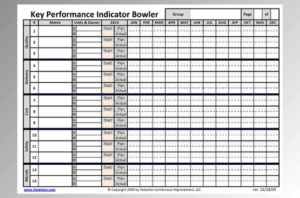
The Bowler Chart is an Excel chart that actually lists what’s going to happen, when it’s going to happen and the responsibility of the person that’s actually going to be doing this. There’s a lot more information that you can put on there, all kinds of different things, but these dates that you put on there to actually achieve your objective should be listed there. And of course if that’s achieved, then the subsequent objective can also be started and then just moves through. The Bowler chart is just a way of kind of taking a look at ensuring that everything that was meant to be done has been done.
So, is the Bowler chart like a project plan?
I wouldn’t say a project plan. It extrapolates the information for the project plan of how you’re going to do it, but it’s not what you would call a business plan or something that’s going to be in a narrative. As far as the X-matrix goes, it’s going to be a visual where everyone can see this and see what needs to be changed, how it’s being changed along with the Bowler chart and to understand when it’s going to be changed by so you have some subsequent order to actually come to consensus on. I’m going to finish this objective at this time that I originally had set, and, you know, I’m the one that’s responsible, so I’m going to be the one that gets it done.
Okay, so once the X-matrix and Bowler charts are completed, how is that information disseminated throughout an organization? Do the leaders who participated then share that information with the people who report to them? Is that how it typically works?
It does not only for who they report to, but for the team themselves so that they all understand everybody has to be in alignment of these goals, otherwise those goals won’t be achieved. So we need to make sure that everybody’s on board for that.
How long does it typically take to complete a Hoshin Kanri and X-matrix session? Is it a few hours? A few days?
Well, you make me giggle a little bit because it depends on the size of the group, okay. It depends on the personalities of the group and then also what people feel is most important. What you feel is most important, I may feel is maybe secondary and so on. You’re bringing in people, the personalities, but you’re trying to put this in the context to where this is our mission for the next three to five years. This is how we’re going to do it on an annual basis. This is the improvement priorities we’re going to be shooting for and the targets to improve. How do we know we’re improving? Are we on track and such? And then I’m going to go to the person that is actually the resource that is assigned to that and hold that person accountable and that person will be the one that reports out.
It takes a little bit longer. And it’s not so much because there’s so much work to do. It’s that you only have the attention for a certain amount of time. And after a little while people start kind of floating off into other ideas that they’re thinking. Typically in the situation I was mentioning with the, the six executives in there planning and trying to get them all on the same page that could take a whole morning. I’ll shoot for usually four days on that. And the reason is I want to make sure that whatever strategic objective that is planned is actually sought after and accomplished. And again, a resource is held accountable to that.
And the reason why I do that is because you can’t really rush say a 50, 60-page business plan and try to put it into a one page and have everybody understand it without being very clear on what you know on the X-matrix. And the X-matrix puts clarity to that. So where you look at a business plan, the narrative can be ambiguous, right? People are going to be subjective, they’ll take what they want out of it.
Whereas in the X-matrix you have it down regarding what you’ve had planned that came out of your Hoshin session, your policy deployment, the policies that you have deployed in the X-matrix. And then you’re going to ensure that everybody’s on the same page, everybody understands at a glance what’s going on. Any updates are there. The Bowler chart can be on the back so people can see who’s doing what, when and where, when I can expect this to be completed.
And those are all very much tied to how the company runs. So you’re walking into a situation where you really don’t know what their environment’s all about at the executive level, except for what they tell you. When you get into an actual Hoshin session and you start an X-matrix, that’s when you really find out who thinks what, when, where and how. That’s different than looking at a business plan.
This is what we’re going to do as an executive team and this is who is going to be held accountable. And we’re going to visit this on a regular basis because remember, it’s a visual, dynamic document. So I want to ensure that we’re staying on track and that I like to do, like I said earlier, on a quarterly basis. Because if you let it go on an annual basis, you’ll forget whatever you even spoke about the previous months. Having this updated is good.
The Bowler chart, who’s doing what, when, where and how and dates and so on all being met. And then this way you can go ahead and those objectives that you came up with in that Hoshin session can be realized from the X-matrix. As you see the X- matrix being dynamically changed as far as the targets, where you’re at and your targets to improve.
John, can we talk a little more about these quarterly reviews you’ve mentioned? These obviously come after the Hoshin Kanri strategic planning session is over. What happens during a quarterly review? Is this where changes to the X-matrix or Bowler charts can happen and what’s your level of involvement as a facilitator?
Yes, as a matter of fact, you’ll often find changes. Remember the old saying, It’s what you think you know, that isn’t so that gets you in trouble. So what ends up happening these quarterly reviews, I mentioned that you have a resource that’s accountable and is going to report out that’s how your quarterly review will start.
And they will report out from the original X-matrix and give an understanding of what’s transpired and where we’re at in regards to the actual goal that we’re trying to accomplish in that first year. Then it opens the floor for questions of the other folks that are in the room, the executives in the case that I’m speaking of, to ask questions to this person that has been held accountable.
I myself try to keep things on track not to mess with the politics, don’t give ideas or anything like that. That’s not in their plan. What we may do is make sure that we stay on track of what we’re trying to accomplish in the amount of time that we have in that quarterly review to accomplish this and walk away with an updated target to improve even more. So if we’re lagging behind or if we’re ahead of time and everything’s going well, fantastic, keep going.
don’t stand in the way of success, so to speak. So it’s really a neat way to sit down and just say, Wow! has it been three months already? And when you hear that usually in the first quarter you have to tighten things up a little bit. So that’s what I mean by keeping them on track, it’s easy for them to start thinking and talking about different items, but you want to stay on that one page document.
Very rarely do I ever see the objectives change. As far as your three year and your annual objective, you may find that there’s maybe another target out there that you didn’t think of.
John, I just realized we haven’t discussed another obvious question – who should participate in the Hoshin Kanri strategic planning session? Considering that we’re both Lean Six Sigma instructors we often get push back from students who are not in leadership positions when they are instructed to complete an X-matrix. Beyond that issue, there’s also entrepreneurs, small business owners, and maybe even project managers who might require a little extra creativity when it comes to procuring the resources needed to execute growth strategies. So, in the spirit of the famous Hamilton musical, who should be in the room where it happens?

In the room should be the decision makers. The CEO should be in the room. Absolutely. That would be obviously in a large organization. This can be done in a very small organization as well. The X-matrix is not just a tool for the executives, it’s for the whole initiatives of the company. So supervisors can be in there, leads can be in there.
But as far as the quarterly meetings, I want the person that’s going to be the resource that’s responsible for this objective to happen in there, as well as those people that will need to provide input into the conversation. You’ll find after the second quarterly, things start to really settle down and people can go ahead and say, “Okay, now I know where we’re going now. And we’re moving in the right direction.”
That’s imperative that everybody’s moving in the right direction. Somebody throws a wrench in there, it could really throw everything off. And so you really find that the first one is probably one that everyone on the executive level is in there. And I would also bring in the supervisors that the executives are going to be passing this down to so that everybody knows what they really know and understands what they really understand.
Is it possible to have too many people in the room?
Absolutely. And also, what are you going to work on? What is the issue? You don’t need to have people in there that don’t know anything about the issue that you’re going to be working on. In regards to the six people who actually came up with the strategic objectives, you would like them in there to make sure that the understanding is there, but the person that is also the resource that’s responsible would be in there and if you had a couple more that were in the background being able to understand it, that’s fine too. The key there is that everyone walks away and they’re in alignment with what those objectives are and how you’re going to get there.
In the next episode, I’m going to share an X-matrix that me and my team created around our strategic growth goals. That’s one resource to share with our listeners but do you have any others? How can people contact you if they’d like your help facilitating a session? And where can people learn more about Hoshin Kanri and the X-matrix?
There’s a few workbooks out there that can actually walk you through the whole Hoshin session. One of my favorites is by Matthew Cross, and it’s the Hoshin Success Compass and kind of explains it to the executives how we’re going to do this, what we’re going to be doing, and they can kind of follow along and they have this kind of template there in front of them. Workbooks are always great. I like watching YouTube videos.
I get more out of the audio and the visual and there’s some really good YouTube videos on Hoshin Kanri and X Matrix. The Kaizen Institute has one called the Hoshin Kanri and the X-matrix, which is another resource that I highly recommend too. And then there’s a little pocket tool that you carry around. It’ll give you the hints and the directional ideas that you need to be doing at that point. So it kind of brings you back to center. I actually have that in my briefcase all the time when I’m gonna go out and do that Hoshin sessions,
The name of that pocketbook John mentioned is called, “The Ultimate Hoshin Kanri X Matrix Guide.” We’ll make sure to have a link to it in the show notes. Before we close, I thought you might enjoy interesting fun facts about Hoshin Kanri. They are two Japanese words that loosely translate to “policy deployment.” And there’s debate as to its origin. Some sources say the process was developed by a Japanese professor and later adopted by Toyota. Others say it comes from Bridgestone Tires. But, regardless of the source, John encourages us to focus on what this strategic planning
process can give us.
I think mainly when you’re doing the Hoshin sessions, it really builds that whole culture of problem solvers that you want on board and it builds their morale. They start thinking a different way. I wish they would all go through my lean class. They would have that idea of camaraderie in there and they would be working as one unit moving towards that annual objective and everything to do with it and really extrapolate out of that information they need to bring back to the teams, start performing in a different way should they make a change.
I want everybody to have fun is what I guess I’m trying to say. And I’m trying to take this huge pizza here and try to eat it at a slice at a time and give you just an overhead of this subject. There’s so much that I could give you in three to four days that we can’t possibly do in this podcast. But I think that having fun while you do it is extremely important.
Yes, I know it’s an unfair ask to explain the X-matrix in one podcast episode. But it’s all the more reason why you should contact John directly if you want more information. Remember, this isn’t just for large enterprises. It absolutely applies to small businesses as you’ll hear in the next episode. John, thank you so much for stopping by to share more about the X-matrix with us! I really appreciate it.
Thank you so much, Alicia. I really appreciate you having me back. I always enjoy having a conversation with you.
Thank you for listening! If you’d like to connect with John, then go to BusinessInfrastructure.TV. There you’ll find links to his contact information and the resources he shared, as well as a free X-matrix that you can download to use in your strategic planning process. Again, you can find this information in the show notes at BusinessInfrastructure.TV.
If you enjoyed this episode, then please subscribe, give us a five-star rating and leave us a review.
 Now that you have a validated idea that you can use in your strategic growth plan, it’s time to develop your X-matrix and action plans! Join me in the next episode where I’ll share how me and my team developed an X-matrix around our idea to create an online course.
Now that you have a validated idea that you can use in your strategic growth plan, it’s time to develop your X-matrix and action plans! Join me in the next episode where I’ll share how me and my team developed an X-matrix around our idea to create an online course.
Be sure to come back to the place wherever you’re listening so you don’t miss this next episode! Until then, remember to stay focused and be encouraged. This entrepreneurial journey is a marathon and not a sprint.
This podcast episode was written and produced by me, Alicia Butler Pierre. Audio editing by Olanrewaju Adeyemo. Original score and sound design by Sabor! Music Enterprises. Video editing by Gladiola Films. A special thank you to our sponsor, Equilibria, Inc., and to Hashim Tale for creating the show notes.
This is the Business Infrastructure – Curing Back-Office Blues podcast.


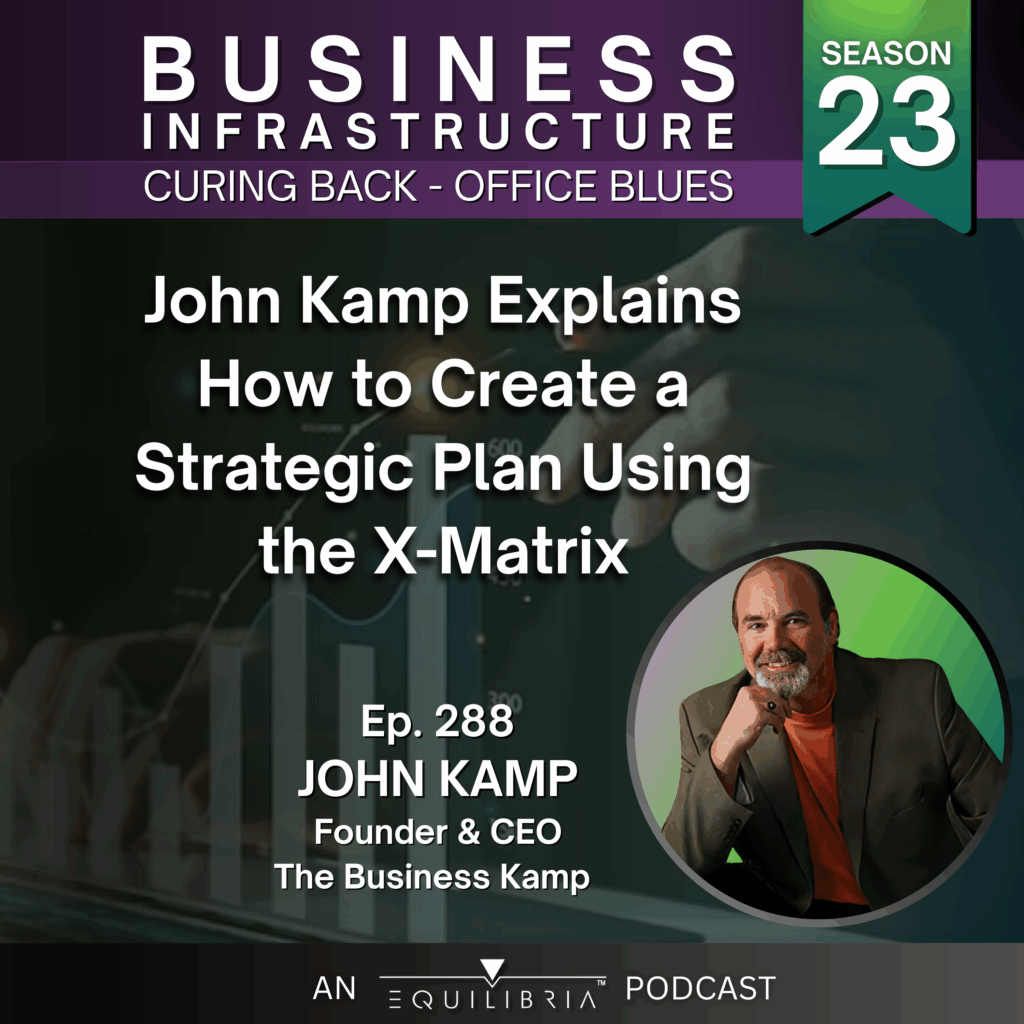
 Hoshin Kanri is a strategic tool, it’s a visual tool. It helps us in strategic planning we take a look at various things that we want to plan for in the long term and then we go ahead and break that down into short term goals and then we take a look at how to prioritize those goals and then what we do to target improvement. We make sure that we want to improve whatever we see in our strategic goals, why we’re making our strategic goals. And then what we want to do is make sure that we have accountability to those goals by utilizing our resources.
Hoshin Kanri is a strategic tool, it’s a visual tool. It helps us in strategic planning we take a look at various things that we want to plan for in the long term and then we go ahead and break that down into short term goals and then we take a look at how to prioritize those goals and then what we do to target improvement. We make sure that we want to improve whatever we see in our strategic goals, why we’re making our strategic goals. And then what we want to do is make sure that we have accountability to those goals by utilizing our resources.


 Now that you have a validated idea that you can use in your strategic growth plan, it’s time to develop your X-matrix and action plans! Join me in the next episode where I’ll share how me and my team developed an X-matrix around our idea to create an online course.
Now that you have a validated idea that you can use in your strategic growth plan, it’s time to develop your X-matrix and action plans! Join me in the next episode where I’ll share how me and my team developed an X-matrix around our idea to create an online course. 





